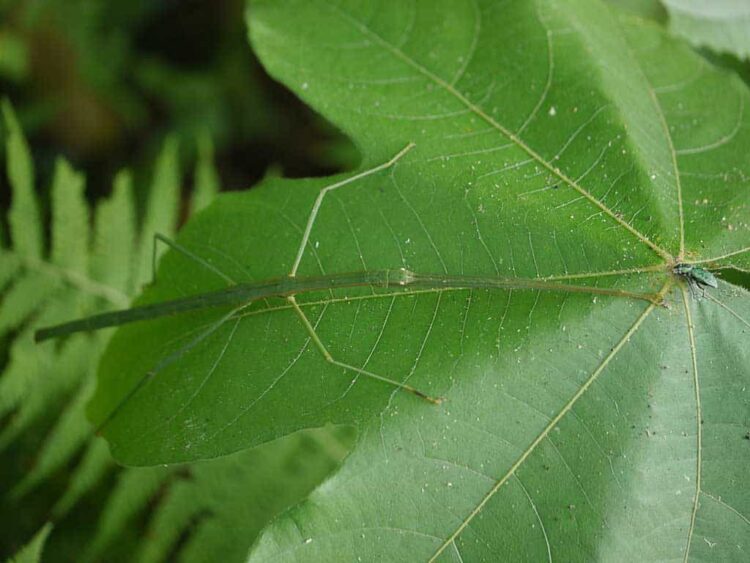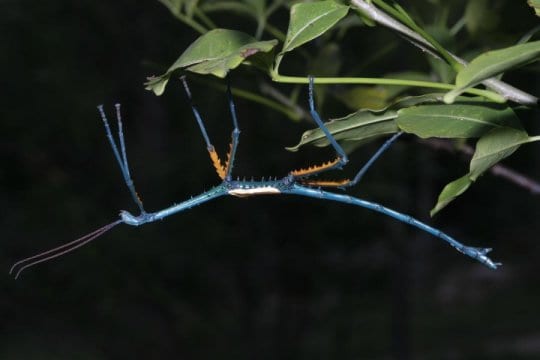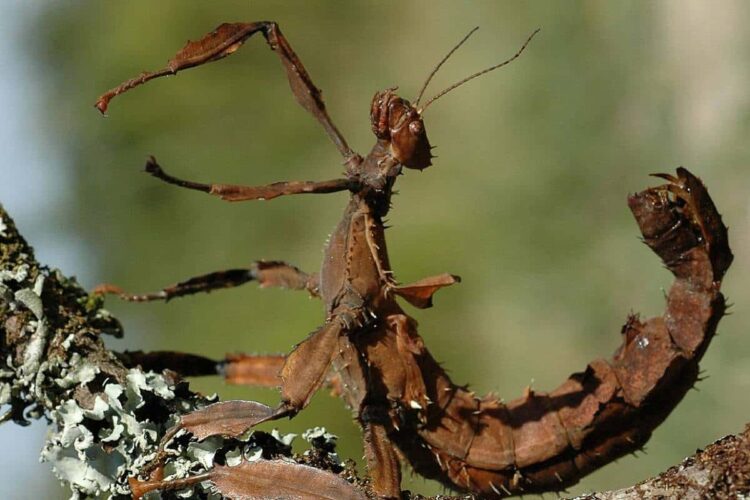Table of Contents
Stick insects are very delicate creatures whose primary means of defense is evasion and escape rather than a direct confrontation. Having said that, different species of stick insect make use of a variety of defense mechanisms to protect themselves.
Indeed, some can be confrontational when it comes to protecting themselves, although such examples are rare.
Mother Nature has ‘designed’ stick insects to evade and escape rather than face their predators head on. This is why their appearance closely resembles their plant habitat and surroundings, making them almost invisible to predators and other ill-wishers. Their unique appearance happens to be their main defense mechanism – camouflage.
For more advice and information on keeping and looking after stick insects, check out my ebook on Amazon click here
(opens in a new tab).

Appearance Protects Against Predation
Stick insects are a favorite meal for many other species, so their primary form of protection is their appearance. As the name implies, stick insects look like they are small sticks, twigs, or leaves – they blend into their natural habitat and become almost impossible to detect by predators. Many species of stick bug actually perform a rocking motion (back and forth) to mimic the movement of leaves swaying in the breeze, making them even more obscure.
Certain stick insect species, like the Indian stick insect for example, can actually change their appearance to match their surroundings – a true stick bug chameleon! Camouflage is not the only line of defense available to stick insects though as some species such as the thorny devil stick insect and giant spiny stick insect can actively defend themselves by emitting of a foul smelling substance that repels the attacker. Stick insects do have mouths and teeth that can pinch and tear leaf matter, though these are not sufficiently strong to perform any real defense functions. Some large stick insect species can bite
for example, can actually change their appearance to match their surroundings – a true stick bug chameleon! Camouflage is not the only line of defense available to stick insects though as some species such as the thorny devil stick insect and giant spiny stick insect can actively defend themselves by emitting of a foul smelling substance that repels the attacker. Stick insects do have mouths and teeth that can pinch and tear leaf matter, though these are not sufficiently strong to perform any real defense functions. Some large stick insect species can bite and hold onto a human finger and have been known to draw blood, but the damage caused is rather insignificant.
and hold onto a human finger and have been known to draw blood, but the damage caused is rather insignificant.

Using Poison for Defense
Poison is another form of defense for certain stick insects. Some species are brightly colored in red or blue to indicate their toxicity to predators who might be feeling adventurous in their menu choices. A few of the poisonous stick insect varieties are able to secrete poison while others are poisonous on the inside, but these species are pretty rare though. Then there are those types of stick insect that have legs covered in spikes, but their bodies are just too delicate for the spikes to be of any actual defensive value. Talking of legs, stick bugs are among only a few known species of animal capable re-growing limbs. This is one of their key but hidden means of protection. When a predator catches hold of a stick insect’s leg, the stick is able to detach the trapped limb and escape successfully. The missing limb is then regrown back to full functionality (but not when the stick insect is a fully formed adult).
are able to secrete poison while others are poisonous on the inside, but these species are pretty rare though. Then there are those types of stick insect that have legs covered in spikes, but their bodies are just too delicate for the spikes to be of any actual defensive value. Talking of legs, stick bugs are among only a few known species of animal capable re-growing limbs. This is one of their key but hidden means of protection. When a predator catches hold of a stick insect’s leg, the stick is able to detach the trapped limb and escape successfully. The missing limb is then regrown back to full functionality (but not when the stick insect is a fully formed adult).

Masters of Deception
Being masters of disguise, stick bugs are also exceptionally good at deception. Some stick insect species feature brightly colored wings that are tightly folded along their body in order to keep them hidden. When a predator approaches or corners the stick insect and no other means of defense are available, it rapidly spreads its brightly colored wings. This usually startles the predator and gives the stick valuable time to drop to the ground, quickly hide its wings, and become camouflaged in its surroundings once again.
wings that are tightly folded along their body in order to keep them hidden. When a predator approaches or corners the stick insect and no other means of defense are available, it rapidly spreads its brightly colored wings. This usually startles the predator and gives the stick valuable time to drop to the ground, quickly hide its wings, and become camouflaged in its surroundings once again.
Stick insects are mainly nocturnal , during the day they hide in plain sight remaining motionless for long periods of time, blending perfectly with their surroundings.
, during the day they hide in plain sight remaining motionless for long periods of time, blending perfectly with their surroundings.

